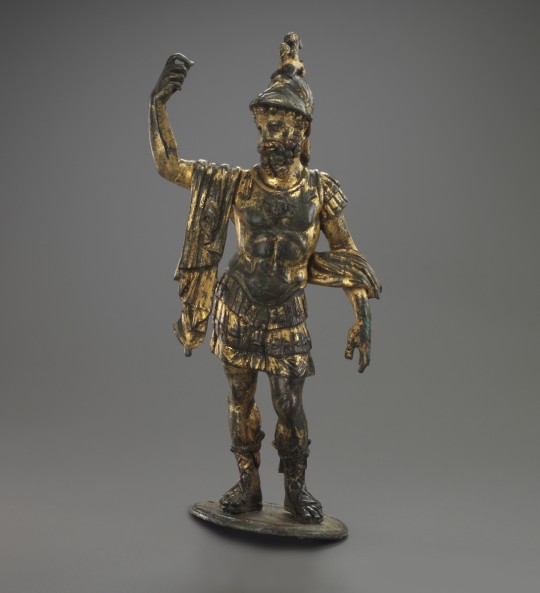
Musée départemental Arles antique, Arles (FR) 15 December 2018 - 22 April 2019
The Army of Rome, the Power and the Glory
Never would the expansion of Rome have been so rapid, nor would its territory have covered so vast an area for such a long time without the incredible fighting strength of its army. As well as being an instrument of conquest, it also guaranteed the Roman Empire a long period of peace. The exhibition presented at Arles shows how the army was organised, its strength and skills, while retracing its development from the 2nd century BC to the end of the Empire.
CURATORS: Katia Schörle (Musée d’Art Classique de Mougins, Mougins, France) and Claude Sintes
This exhibition, divided into seven sections, invites visitors to discover how the Roman army was structured and functioned. A vector of civilisation, it enabled Rome to dominate the ancient world, promoting the spread of its culture to the far reaches of the Empire.
Its general-in-chief was right at the top of the military hierarchy: under the Republic, he was a magistrate who, in cases of extreme danger, was temporarily invested with imperium by the Senate; during the imperial period, it was the emperor who held in perpetuity this absolute authority. The war leader’s role is thus the focus of the first part of the exhibition. Sections 2 (The Infantry), 3 (The Cavalry) and 4 (The Navy) deal subsequently with these three types of army corps. A veritable military force in Rome, the infantry was formed of legionaries, the best trained fighters. Its strength came from its equipment, its battle tactics and its discipline. The cavalry, initially for the wealthiest citizens and merely a prestigious supplement to the legion, also developed into a vital professional military force under the Empire. As for the navy, it gave Rome its brilliant victories at sea over the Carthaginians during the Republican period. Professionalised under Augustus, it was to the navy that Rome owed the pacification of the inland Mediterranean Sea.
Roman military tactics ensured triumph and glory for Rome: section 5 of the exhibition, The Army in Action, explains the principal techniques employed. Under the Republic, the practice was to form solid formations to crush the enemy, whereas, in the imperial period, preference was given to small, more mobile and more specialised fighting units. Section 6, Life in the Forts describes the different aspects of soldiers’ lives in the camps along the limes, a buffer zone between the Empire and the uncivilised world. The last section brings to life the everyday world of a Roman legion, with reconstructed military equipment and a display of experimental archaeological research carried out for over 20 years by the Legio VIII Augusta. The exhibition is illustrated with inspiring and informative watercolours by Jean-Claude Golvin, specialist in the reconstruction of ancient sites.





